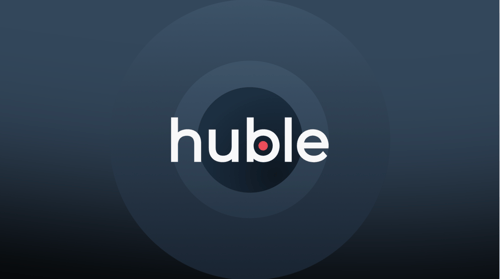In this blog, Kostas Giannoukaris, PPC Director at Huble Digital, explains how businesses can measure the return on investment (ROI) of their Inbound Marketing activities.
After getting excited about everything you have read about Inbound/Content Marketing, you've convinced yourself that it's the way forward for your business. But then you start thinking: “how can I measure my Inbound Marketing ROI, and prove to my boss it was the right call?”
And here is the problem with Inbound Marketing.
To measure the return on investment (ROI) of any campaign, you need to define some parameters, such as:
-
The budget you have spent,
-
the time used,
-
and how much revenue the campaign generated
And this is when you realise proving Inbound Marketing ROI isn't the easiest thing in the world.
Why?
It all starts with the term “Inbound Marketing Campaign”.
In reality, you're not running a campaign. Inbound Marketing is a methodology. If you really need to call what you're doing a campaign, then it's an ongoing, long-term marketing campaign. Inbound Marketing is just the long-term strategy behind it and there are very few quick wins.
However, that doesn't mean you can't attribute ROI to it.
Inbound Marketing Budget
Before running a campaign, marketers have to assign a budget to it. However, when you embrace Inbound Marketing you essentially allocate all your marketing budget to resources that will help you do things the Inbound way.
We often say that you can't be a little bit Inbound; you are either doing Inbound Marketing or you are not. This essentially means that not only should you measure the marketing budget you have spent, you should also calculate the hours every single person has spent on Inbound to bring your marketing to life.
Inbound Marketing Time Frame
Since Inbound Marketing is a methodology, unless you set specific time frames to measure a snapshot of your ROI, you will not be able to measure the total ROI of your campaigns. This is because you cannot really use Inbound Marketing for a month or two and then stop. If Inbound Marketing has started bringing in results, it will keep doing so even after you stop practicing it, unless - of course - you somehow erase your company’s entire digital footprint.
With Inbound Marketing, what you do takes time. For example, an Inbound Marketing approach means getting your content to rank for years to come. The content you create now might not rank for six months, but it might rank after that for five years. You can't bring that back to a campaign - it's a long-term strategy.
Inbound Marketing Revenue
Most of the contacts that flow into your database after you launch Inbound won't necessarily start purchasing from you right away. This means that if at any point you want to measure the revenue that you have generated from Inbound Marketing, you will either have to measure the actual money that has come from customers generated by your Inbound Marketing activity, or you will have to measure the potential revenue from all the contacts that Inbound Marketing has generated for your business. Depending on how long you have been running Inbound Marketing, this can prove quite difficult.
If you have been running Inbound Marketing for a long time you have potentially been able to estimate the value of a contact, as well as how likely they are to purchase from you (depending on where they are in their buyer’s journey, of course). However, no matter how well you have been able to measure their value and the probability of them becoming a client, these are still going to be estimates.
The thing about Inbound Marketing ROI accuracy
Accurately measuring ROI can be very difficult when talking about Inbound Marketing.
If you count only the budget that is assigned as your marketing budget then you misunderstood what Inbound Marketing is about. It's not just about your marketing budget: it’s also about the time that every single person has spent on your marketing activities.
Think about all the billable hours every employee has spent writing a blog, every second someone has spent on social media representing your brand, and every interview you have conducted with your CEO trying to extract valuable information that can be used for new content.
If you only look at a small timeframe and try to measure your ROI up to that point, you are dismissing all the future results that Inbound Marketing will bring you. The whole methodology is based on the fact that the more you do the more you get and the longer you do it the more effective it gets.
Finally, if you measure only the physical revenue you get from the activity you are dismissing a very large list of contacts with potential in your database. Also, if you measure those too then your revenue measurement accuracy is reduced as you are including estimates.
How to measure Inbound Marketing ROI
Inbound Marketing, if done correctly, will bring results for years to come.
With the right tools, it's entirely possible to measure the revenue generated from specific Inbound Marketing activities and attribute it to a campaign.
At every interval, you should be taking measurements of your key performance indicators (KPIs) in relation to your goals. For example:
- Conversion Rate: You should be seeing a constantly improving conversion rate and you should be looking at this rate separately for each one of your traffic sources.
- Lead Value: You should assign potential value to each one of your leads and you should be able to see the total value of your leads grow over time, as well as an increase in average lead value.
- Purchasing Lifecycle Duration: As you create more and more content, that will help your contacts move through the buyer’s journey faster. Over time, the average purchasing lifecycle duration should decrease.
These are just a few metrics to look at but ultimately your ROI is all of your activities put together. If you look at campaign-level, you only ever get a snapshot of performance - not a complete view of your long-term activities.
But by leveraging all of your data and using platforms like HubSpot to achieve end-to-end visibility of activities, it becomes possible to understand and attribute value to your Inbound Marketing.










-3.png?width=500&height=320&name=Matt%20-%20imagery%20bank%20(8)-3.png)

